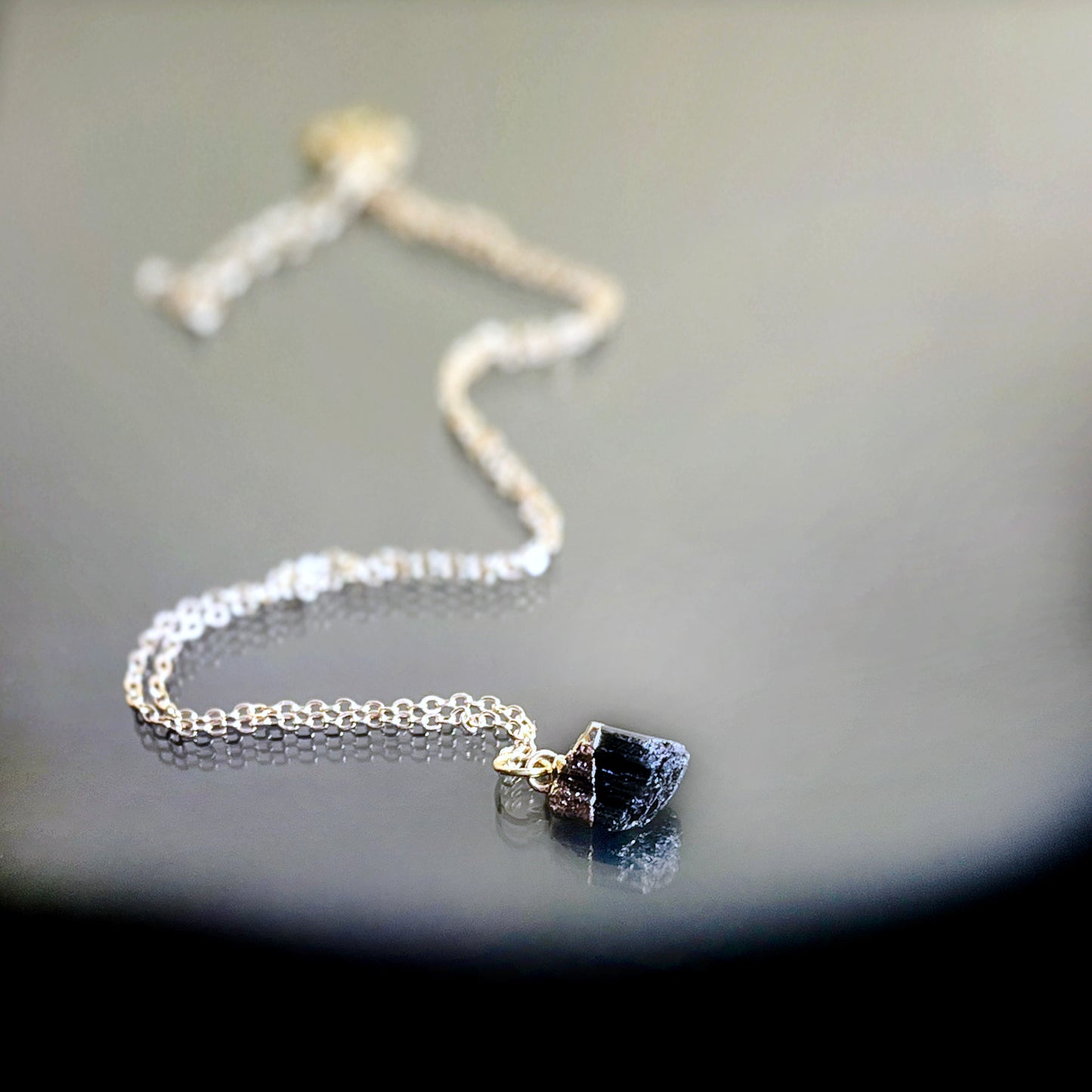Aquelia Design
Колие със суров черен турмалин
Колие със суров черен турмалин
Редовна цена
€48,00 EUR
Редовна цена
€54,00 EUR
Продажна цена
€48,00 EUR
Единична цена
/
по
С включени данъци.
Доставката се изчислява при плащане.
Наличността за получаване на място не можа да се зареди
Черният турмалин е популярна разновидност на турмалин, който е известен със своите защитни и заземяващи свойства. Ето основните свойства и характеристики на черния турмалин:
Физически свойства:
- Химическа формула : NaFe³⁺₃Al₆(BO3)3Si₆O₁₈(OH)₄
- Цвят черен
- Кристална система : Тригонална
- Твърдост : 7 до 7,5 по скалата на Mohs
- Специфично тегло : 3.2 - 3.6
- Прозрачност : Непрозрачен
- Блясък : стъкловиден до субметален
- Ивица : Бяла до сивкава
Оптични свойства:
- Индекс на пречупване : 1.614 - 1.666
- Двойно пречупване : 0,014 - 0,024
- Плеохроизъм : Няма, тъй като черният турмалин обикновено е непрозрачен
- Флуоресценция : Обикновено няма
Лечебни и метафизични свойства:
- Енергия : Черният турмалин е мощен заземяващ камък, който абсорбира негативните енергии и осигурява защита.
- Чакри : Основно свързани с коренната чакра, помага за създаване на усещане за сигурност и стабилност.
- Емоционално изцеление : Помага при облекчаване на стреса, намаляване на тревожността и защита от негативни мисли и емоции. Насърчава усещането за спокойствие и фокус.
- Физическо лечение : Използва се в практики за лечение с кристали за укрепване на имунната система, балансиране на енергиите на тялото и насърчаване на детоксикацията. Също така помага за облекчаване на болката и повишава цялостната жизненост.
Употреби:
- Бижута : Често използвани в пръстени, висулки и гривни. Издръжливостта му го прави подходящ за ежедневно носене.
- Декоративен : Използва се в дърворезби, скулптури и декоративни предмети.
- Лекуване : Обикновено се използва в различни форми, като срутени камъни, необработени кристали и полирани върхове, в кристалолечението и метафизичните практики.
Грижи:
- Почистване : Може да се почиства с топла сапунена вода и мека четка. Избягвайте агресивни химикали и ултразвукови почистващи препарати.
- Издръжливост : Черният турмалин е относително твърд и издръжлив, но все пак трябва да бъде защитен от силни удари и грубо боравене.
Източници:
- Основни източници : Черният турмалин се намира на много места по света, включително Бразилия, Африка (Намибия, Нигерия и Мадагаскар), Пакистан и Съединените щати.
Съвети за идентификация:
- Цвят и блясък : Наситеният черен цвят и стъкловидният до субметален блясък са ключови идентификационни характеристики.
- Кристален хабитус : Обикновено се образува в удължени призматични кристали с набраздени по дължината.
- Тестване : Гемологичните тестове могат да потвърдят черен турмалин чрез неговата специфична гравитация, индекс на пречупване и твърдост.
Забележителни характеристики:
- Пиезоелектрични и пироелектрични свойства : Черният турмалин може да генерира електрически заряд, когато е подложен на промени в налягането или температурата, свойство, което се използва в различни технологични приложения.
- Защитен щит : Често се използва като защитен камък, смята се, че предпазва от електромагнитно излъчване, психически атаки и замърсители на околната среда.
Заземяващите и защитните качества на черния турмалин, съчетани с поразителния му вид, го правят предпочитан избор както в бижутата, така и в метафизичните практики. Неговите здрави физически свойства също допринасят за широкото му използване и популярност.
Сподели


